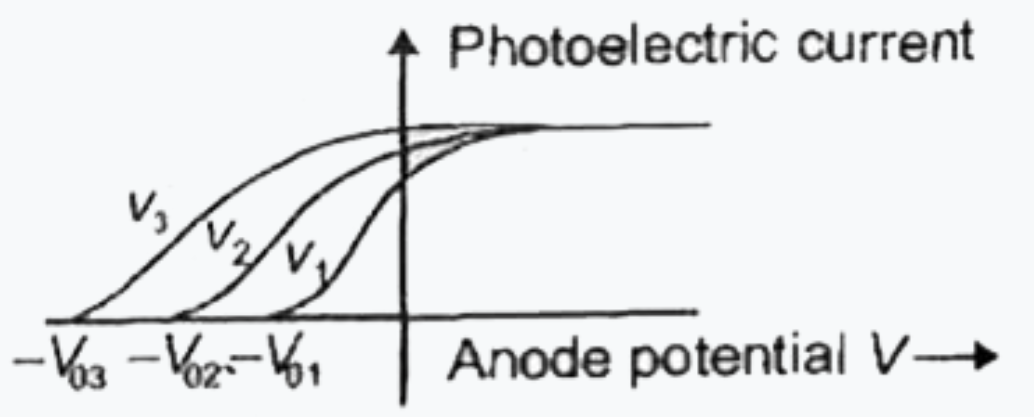By photoelectric effect, Einstein, proved
E = hV
KE=12mv2
E=mc2
E=(Rhc2)/(n2)
The correct Answer is:A
To solve the question regarding what Einstein proved through the photoelectric effect, we can follow these steps:
1. Understanding the Photoelectric Effect:
The photoelectric effect refers to the phenomenon where electrons are emitted from a material (usually a metal) when it is exposed to light of sufficient frequency.
2. Wave vs. Particle Theory:
Classical wave theory of light could not explain the photoelectric effect. For instance, it could not account for the observation that light below a certain frequency, regardless of its intensity, does not cause electron emission.
3. Einstein's Hypothesis:
In 1905, Albert Einstein proposed that light is composed of particles called photons. Each photon has energy that is directly proportional to its frequency. This means that the energy (E) of a photon can be expressed as:
E=hν
where h is Planck's constant and ν (nu) is the frequency of the light.
4. Collision of Photons with Electrons:
When light (as photons) strikes the surface of a metal, the photons collide with electrons in the metal. If the energy of the incoming photons is greater than the work function (the minimum energy needed to remove an electron from the metal), electrons are ejected from the surface.
5. Conclusion:
Therefore, through the photoelectric effect, Einstein proved that light behaves as a stream of particles (photons) and that the energy of these photons is quantized, leading to the conclusion that light has both wave-like and particle-like properties (wave-particle duality).
Final Answer:
By the photoelectric effect, Einstein proved that light consists of particles called photons, and the energy of these photons is given by the equation E=hν.
---
The photoelectric effect refers to the phenomenon where electrons are emitted from a material (usually a metal) when it is exposed to light of sufficient frequency.
Classical wave theory of light could not explain the photoelectric effect. For instance, it could not account for the observation that light below a certain frequency, regardless of its intensity, does not cause electron emission.
In 1905, Albert Einstein proposed that light is composed of particles called photons. Each photon has energy that is directly proportional to its frequency. This means that the energy (E) of a photon can be expressed as:
E=hν
where h is Planck's constant and ν (nu) is the frequency of the light.
When light (as photons) strikes the surface of a metal, the photons collide with electrons in the metal. If the energy of the incoming photons is greater than the work function (the minimum energy needed to remove an electron from the metal), electrons are ejected from the surface.
Therefore, through the photoelectric effect, Einstein proved that light behaves as a stream of particles (photons) and that the energy of these photons is quantized, leading to the conclusion that light has both wave-like and particle-like properties (wave-particle duality).
By the photoelectric effect, Einstein proved that light consists of particles called photons, and the energy of these photons is given by the equation E=hν.
Similar Questions
Knowledge Check
In photoelectric effect, stopping potential depends on
Afrequency of incident lightBnature of the emitter materialCintensity of incident lightDboth (a) and (b)
Wave nature of light cannot explain photoelectric effect because in photoelectric effect , it is seen that
View SolutionIn photoelectric effect , the curve between photoelectric current and anode potential V (for different frequencies ) is shown in figure , then

View SolutionA non-monochromatic light is used in an experiment on photoelectric effect. The stopping potential
View SolutionThe maximum kinetic energy of electrons emitted in the photoelectric effect is linearly dependent on the ………. Of the incident radiation .
View SolutionIn the photoelectric effect, the maximum speed of electrons is found to be 6×105ms−1. The wavelength used is 4000Å. The work function of the metal is
View SolutionWhat is photoelectric effect? Mention the Einstein's photoelectric equation.
View Solution(a) Why photoelectric effect cannot be explained on the basis of wave nature of light?
(b) Write the basic features of photon picture of electromagnetic radiation on which Einstein's photoelectric equation is based.
View Solution
